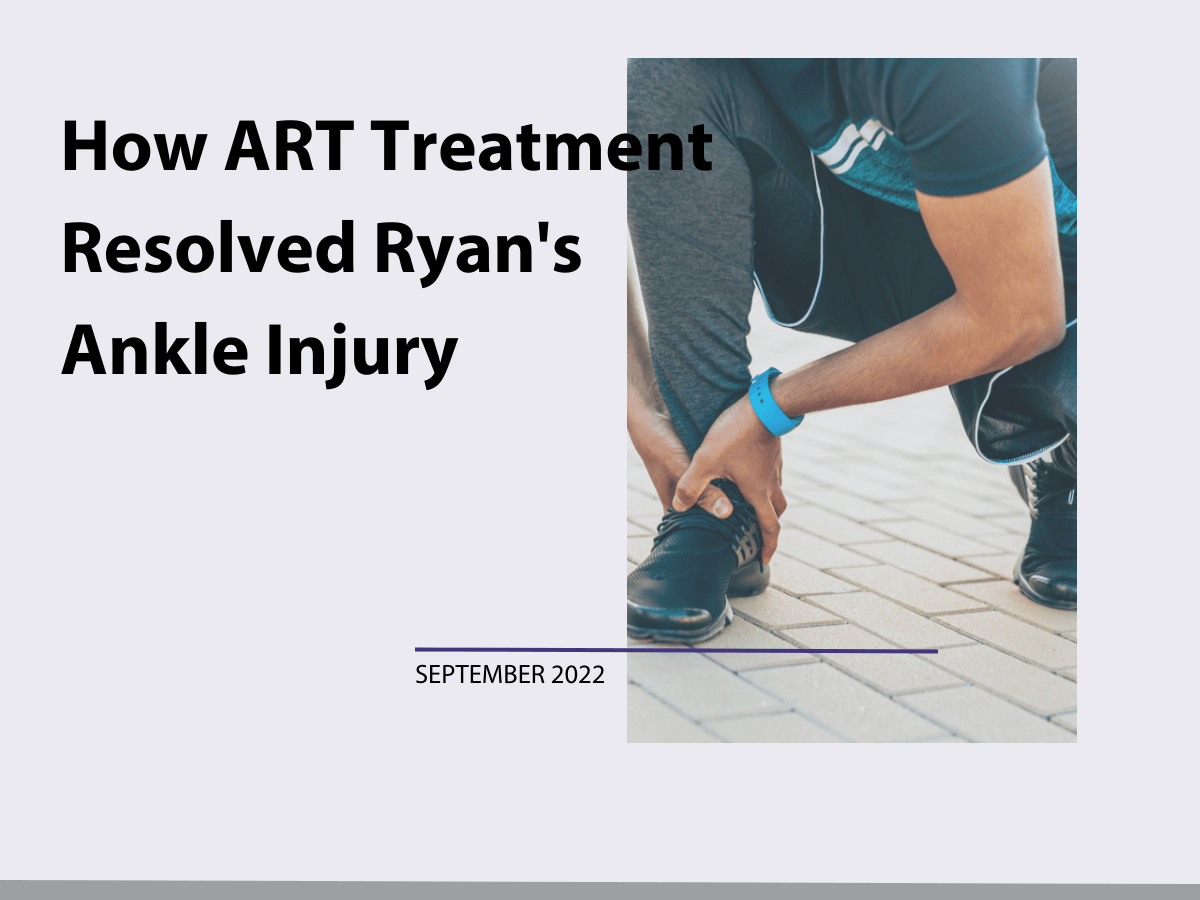“Sometimes, it is that simple.”
As part of our Advanced Full Body Online seminars, we invite patients experiencing soft-–tissue or nerve dysfunction to be treated by Dr. P. Michael Leahy. The goal of this segment is two-fold: help patients feel better faster with ART treatment and teach ART Certified Providers™ how to use ART treatment in a real, clinical setting.
The patient
Ryan Alejo was a part of ART’s Patient Case Studies in September 2022, presenting with a foot injury from a fall while playing soccer.
As an avid soccer player, he was more at risk of sustaining an injury.
Soccer players are at a higher risk of the following injuries:
- Ankle sprains
- Knee sprains
- Calf strains
The symptoms
Because of the soccer injury, Ryan was enduring pain in his right foot, making walking painful and preventing him from getting back on the field.
When he fell, he landed with his entire weight on his ankle. After that, his walking became unstable.
The treatment
ART Certified Providers™ follow a diagnostic process unique to Active Release Techniques® (ART®) treatment.

A patient-friendly explanation of the ART Diagnostic Algorithm to explain the process of ART treatment.
What is ART treatment?
ART treatment is a non-invasive system that treats soft-tissue and nerve dysfunction at the source. This hands-on treatment uses touch, pressure, tension, and patient movement to pinpoint and treat the origin of the affected area.
Step 1: Find the source of pain.
First, Dr. Leahy instructed Ryan to walk in a straight line so that he could examine his walking.
To identify the source of pain, he began feeling Ryan’s ankle and foot while Ryan was moving his ankle in a dorsiflexion motion, moving his foot up towards his shin.
Through Dr. Leahy’s touch, he could tell there were torn tissues within the muscles in the front and side of his ankle.
Step 2: Feel for contributing sources.
Dr. Leahy identified that the peroneus tertius muscle and front ligaments were contributing to Ryan’s foot pain.
By palpating, Dr. Leahy could feel scar tissue build-up which decreased the strength in Ryan’s ankle and led to the loss of stability.
Step 3: Treat the problem.
To relieve the pain and restriction of his ankle, Dr. Leahy alternated the use of ART protocols palpation of the affected ankle region until Ryan’s walking improved.
The results
After working through the ART Diagnostic Algorithm, Dr. Leahy successfully treated Ryan.
Ryan indicated that his ankle felt stable, the tension was relieved, and was walking with only a little discomfort.
Want to witness the magic of ART treatment for yourself? Watch the full video on YouTube.
